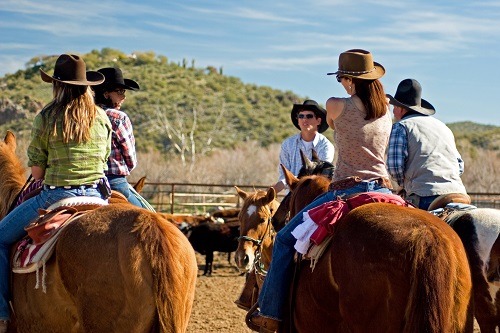
Not long ago, SDM covered the rising interest in esports faming simulator games. Running concurrently with this was the question of whether it might feed into an increased interest in farming and agriculture, as well as geology, soil engineering and other earth-related sciences, and what changes might be seen in the market as a result. (By the way, such games continue to be popular.)
It seems the market has already taken its next step forward. According to Future Market Insights (FMI), the interest in agritourism (also known as agro-tourism) is, well, blossoming. Agritourism, for those who are not familiar with the concept, is defined as tourism-related promotions that attract visitors to farms, ranches or other agricultural business for the purposes of entertaining and/or educating the visitors while generating income for the farm, ranch, or business owner.
And while some represent strictly adult-level interest (vineyard tours and wine-tastings, as well as trips to cannabis farms to see growing and harvesting operations), others more related to sports tourism where families are involved might include:
- pumpkin picking patches and corn mazes, both popular this time of year;
- You-pick operations (everything from fruit to vegetables to herbs and more);
- petting and feeding zoos;
- hay rides;
- cut-your-own Christmas tree farms;
- dude ranches;
- demonstration farms;
- agricultural museums;
- living history farms;
- on-farm farmers’ markets;
- rural bed & breakfasts; and
- garden tours (a subset of which is water garden tours).
Because the demand is growing, it is becoming easier to market opportunities for agritourism; web sites, such as agritourismworld.com, provide comprehensive databases of agritourism operations throughout the country.
The numbers back up the interest. FMI says that the overall market for agritourism progressed from $76.7 billion in 2018, with an average yearly growth rate of 4 percent until 2022, to nearly $89.8 billion by the end of that year. This year, further growth is expected, with the numbers predicted to hit $91.6 billion.
 Furthermore, this report predicts the worldwide demand for this type of tourism will record a CAGR of 5.8 percent from 2023 to 2033. By following this promising growth rate, the overall market size, in terms of value, is projected to reach $160.9 billion by 2033.
Furthermore, this report predicts the worldwide demand for this type of tourism will record a CAGR of 5.8 percent from 2023 to 2033. By following this promising growth rate, the overall market size, in terms of value, is projected to reach $160.9 billion by 2033.
But of course, the question needs to be asked: Why are people flocking to farms, vineyards, pumpkin patches and other sites, particularly after playing in tournaments – or as vacations as a whole? Well, according to FMI, it’s spurred on by the fact that it allows city- (and even suburban-based) travelers to escape from urban life and re-discover their rural roots.
Engaging in agriculture farms and fields and experiencing rural life is becoming a trend and attracting travelers towards agri-rural tourism. Lastly, agri-rural tourism contributes to the key growth of the tourism industry with the help of income generated from agri-rural tour activities. Folding into the growth is the rise in eco-tourism and sustainability tourism. In fact, agritourism and rural tourism (a subset of agritourism) is an emerging trend.
The wish for parents to remove children from screens, as well as the overall push to explore areas where pollution is lower, is seen as a growth factor. Fitting this mold, farm vacations generally include working in fields, a village tour, shopping for homemade products, exploring the farm-to-table approach and experiencing authentic rural life. Children, teens and millennials all seem to like to participate in such activities, which results in the growth of the market. (Intangible benefits also include learning about, and respecting, farming operations.)
Student trips, family trips and group trips are driving the demand for agri-rural tourism. Additionally, many schools are introducing environmental studies as a part of their curriculum, and as a result, are offering field visits to farms and rural areas and try to connect students with the roots of agri-rural tourism. Meanwhile, agriculture science is one of the emerging trends in education. Lastly, families and groups like to know they have contributed to the agriculture and rural sector.
According to FMI’s analysis, recreation agritourism can get more participants compared to other service types. The recreation of agritourism involves fieldwork exploration, participation in agriculture and rural development activities, learning about the new technologies and advancements in the agriculture and rural sector, organic farming practices, and other experiences. It focuses on enriching agri-rural tourism through interactive learning about agriculture and the rural development sector.
Another metric where growth is seen is the nationwide increase at attendance at county fairs, which have a strong educational component when it comes to farming and livestock, and which work hard to increase engagement with youth. Additionally, interest in rodeo nationwide continues to grow, creating even greater awareness of lifestyles and careers beyond the office.
And of course, it all traces back to the sports tourism industry, and what local sports commissions and CVBs can help promote. As fall moves in and the weather cools down, many destinations will not be able to promote water parks, beaches and other outdoor activities with the same effect as in July and August; however, agritourism can be an excellent substitute for youth sports participants to unwind before, between or after games.
SDM will continue to follow this developing issue.

